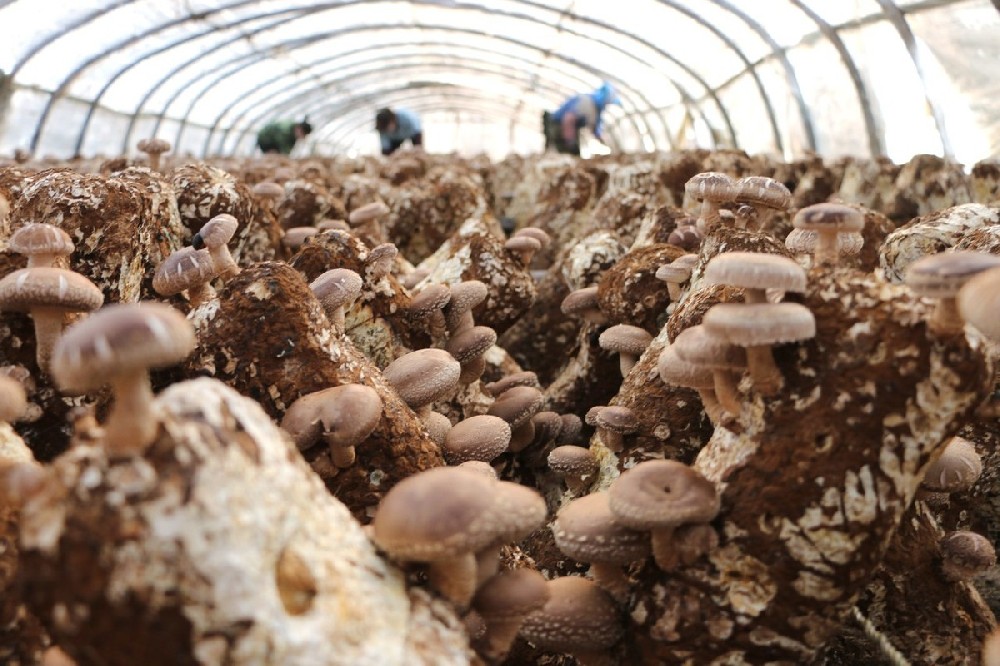

— Blogs —
—Products—
 Consumer hotline +8618073152920
Consumer hotline +8618073152920 WhatsApp:+8615367865107
Address:Room 102, District D, Houhu Industrial Park, Yuelu District, Changsha City, Hunan Province, China
Product knowledge
Time:2024-01-30 20:41:48 Popularity:4259
Mushroom cultivation is an ancient technology, and thousands of years ago, mankind has been using various methods to cultivate mushrooms. There are various methods of mushroom cultivation, including natural growth, indoor cultivation and field cultivation. Among them, indoor cultivation is one of the most commonly used methods, which can quickly grow high-quality mushrooms by controlling environmental factors such as temperature, humidity and light.
Sensors can be used in mushroom cultivation to monitor and optimize various parameters that affect the growth and yield of mushrooms. Here are some examples of sensors commonly used in mushroom cultivation:

1. Temperature Sensors: Temperature is a crucial factor that affects the growth and development of mushrooms. Sensors can be used to monitor the temperature in different parts of the growing environment, including the substrate, air, and casing layer. This information helps farmers adjust heating or cooling systems to maintain optimal temperatures for mushroom growth.
2. Humidity Sensors: Mushrooms require specific humidity levels for proper growth. Humidity sensors can be used to monitor the moisture content in the air and substrate and ensure that it stays within the desired range. This information helps farmers adjust ventilation and misting systems to maintain optimal humidity levels.
3. CO2 Sensors: Carbon dioxide (CO2) concentration affects the growth and yield of mushrooms. High levels of CO2 can lead to stunted growth or reduced yield. CO2 sensors can be used to monitor the concentration of CO2 in the growing environment and adjust ventilation systems to maintain optimal levels.
4. Oxygen Sensors: Mushrooms require oxygen for growth and respiration. Oxygen sensors can be used to monitor the oxygen concentration in the growing environment and ensure that it stays within the desired range. This information helps farmers adjust ventilation systems to maintain optimal oxygen levels.
5. Illumination Sensors: Although mushrooms do not require light for growth, Illumination sensors can be used to monitor light exposure in the growing environment. This information helps farmers ensure that the growing environment is kept in complete darkness, which is necessary for proper mushroom development.
By using sensors to monitor these parameters, farmers can optimize the growing environment for mushroom cultivation, leading to higher yields, better quality mushrooms, and more efficient resource utilization.
The technology of mushroom cultivation is also constantly developing and improving, and more and more new cultivation techniques have been introduced, such as liquid deep fermentation technology and tissue culture technology. These new technologies can not only improve the yield and quality of mushrooms, but also shorten the growth cycle, providing strong support for the sustainable development of the mushroom industry.
Related recommendations
Sensors & Weather Stations Catalog
Agriculture Sensors and Weather Stations Catalog-NiuBoL.pdf
Weather Stations Catalog-NiuBoL.pdf
Related products
 Combined air temperature and relative humidity sensor
Combined air temperature and relative humidity sensor Soil Moisture Temperature sensor for irrigation
Soil Moisture Temperature sensor for irrigation Soil pH sensor RS485 soil Testing instrument soil ph meter for agriculture
Soil pH sensor RS485 soil Testing instrument soil ph meter for agriculture Wind Speed sensor Output Modbus/RS485/Analog/0-5V/4-20mA
Wind Speed sensor Output Modbus/RS485/Analog/0-5V/4-20mA Tipping bucket rain gauge for weather monitoring auto rainfall sensor RS485/Outdoor/stainless steel
Tipping bucket rain gauge for weather monitoring auto rainfall sensor RS485/Outdoor/stainless steel Pyranometer Solar Radiation Sensor 4-20mA/RS485
Pyranometer Solar Radiation Sensor 4-20mA/RS485
Screenshot, WhatsApp to identify the QR code
WhatsApp number:+8615367865107
(Click on WhatsApp to copy and add friends)
